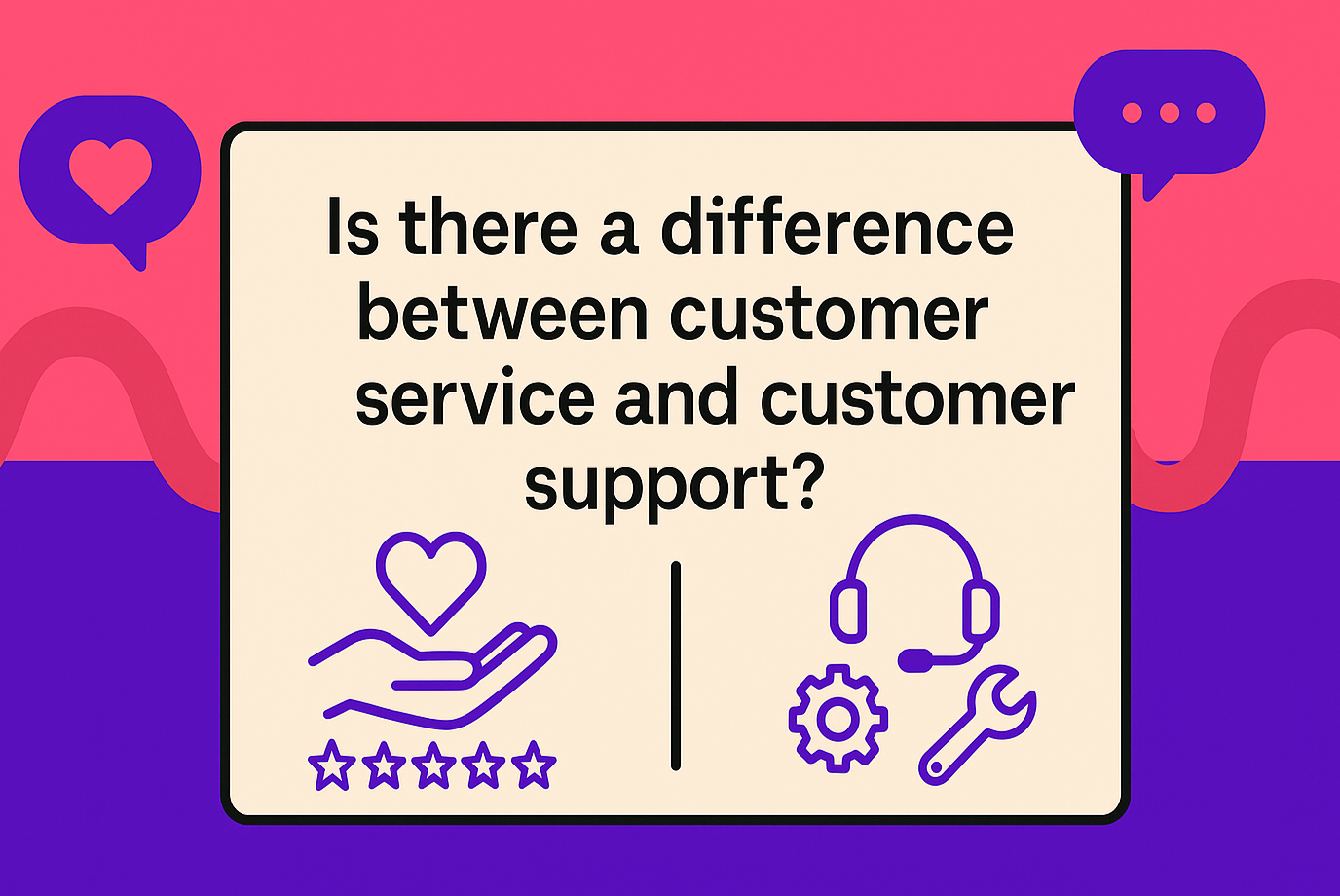
Customer service refers to the overall assistance a company provides throughout the customer journey, whereas customer support refers to the specialized, technical help offered when customers encounter issues with a product or service.
In this article, we will discuss the difference between customer service and customer support, and how these work together for businesses.
When a customer interacts with your business, they don’t always distinguish between customer support and customer service, but you should. Customers expect both friendly service and effective technical help. If your teams don’t clearly define these roles, you risk mismanaged expectations, longer resolution times, and lower satisfaction.
By separating customer service from customer support, businesses can:
Customer service is the term used to describe all customer-facing interactions designed to provide assistance, build trust, and maintain satisfaction. It applies throughout the entire customer journey, all the way from initial inquiries to post-purchase follow-ups.
Examples of customer service tasks include:
Great customer service is proactive and relationship-focused. It’s less about technical fixes and more about creating positive experiences that encourage repeat business.
Customer support is a specialized function within customer service. The customer support team focuses on providing technical assistance for products or services after purchase. This role often requires technical expertise and is designed to help customers use a product effectively or resolve product-related issues.
Examples of customer support tasks include:
Customer support is reactive. It kicks in when customers experience problems that need resolution. The goal is to ensure the product works as intended so customers can continue using it without frustration.
While many people use the terms customer service and customer support together, there are clear differences that shape the overall customer experience.
Scope is the first major difference. Customer service is broad, covering the full customer journey from customer inquiries to building long-term customer relationships and ensuring customer satisfaction. It includes everything from answering pre-purchase questions to handling billing or general account issues.
Customer support, on the other hand, has a much narrower focus. The customer support team is responsible for solving customer issues tied directly to the product or service, usually in the form of technical support or troubleshooting.
The timing of each also differs. A customer service representative or customer service agent works with customers both before and after a purchase, guiding them through options and following up to ensure a positive customer experience.
By contrast, a support agent or customer support agent typically steps in only after purchase, when the customer reaches out for help with installation, product errors, or advanced feature use.
Their skills highlight another distinction. Customer service teams rely on empathy, communication, and conflict resolution to deliver great customer service, build trust, and encourage customer loyalty.
Meanwhile, support teams depend on technical expertise and product knowledge. Support reps focus on resolving problems efficiently and ensuring the support experience is smooth and effective.
The objective of each role is also unique. The goal of customer service is to provide exceptional customer service, foster positive customer interactions, and maintain strong long-term relationships. Customer service aims to anticipate customer needs and create a consistent, reliable experience. Customer support, however, is more reactive.
The customer support representative focuses on resolving problems quickly, allowing customers to continue using the product or service without frustration. These support interactions often determine whether the customer feels confident enough to stay loyal to the brand.
The approach to customers is another point of difference. Customer service is proactive, working toward creating a human-centered experience, ensuring that every customer feels valued. Customer support is a reactive service, starting only when the customer encounters a problem and reaches out for help.
Even the nature of customer interactions varies. Customer service covers a wide range, from answering sales questions to handling refunds and providing account assistance. Support deals specifically with technical queries, troubleshooting, and error resolution.
Structurally, businesses also organize these teams differently. A customer service team focuses on delivering the best customer service across multiple touchpoints, like live chat, email, or follow-up calls.
A customer support team, by contrast, is often staffed with technically skilled support and service experts or support representatives who can provide accurate and detailed solutions.
Finally, their impact on the customer experience differs. Customer service helps create a:
Customer support ensures that the product or service functions as expected, reducing customer frustration and reinforcing trust through problem resolution.
In practice, both roles must work together. Customer support vs customer service is not about choosing one over the other, but combining them to provide customer confidence, using customer feedback to improve, and aligning the efforts of customer service and support teams.
By doing so, companies deliver exceptional customer outcomes and consistently improve the customer experience across every stage of the customer journey.
Both the customer support as well as the customer service help businesses in a variety of ways, including;
Businesses that align the best customer service and support create a seamless experience. This means:
In sum, the Customer service and customer support overlap, but they serve different purposes. Service focuses on relationships and overall satisfaction; support provides technical problem-solving. Companies that invest in both gain happier customers and a competitive edge in the market.
Bridge Service and Support Gaps
Scale live chat, email, voice, and IT helpdesk with ChatPandas.
Start now → book-a-demo